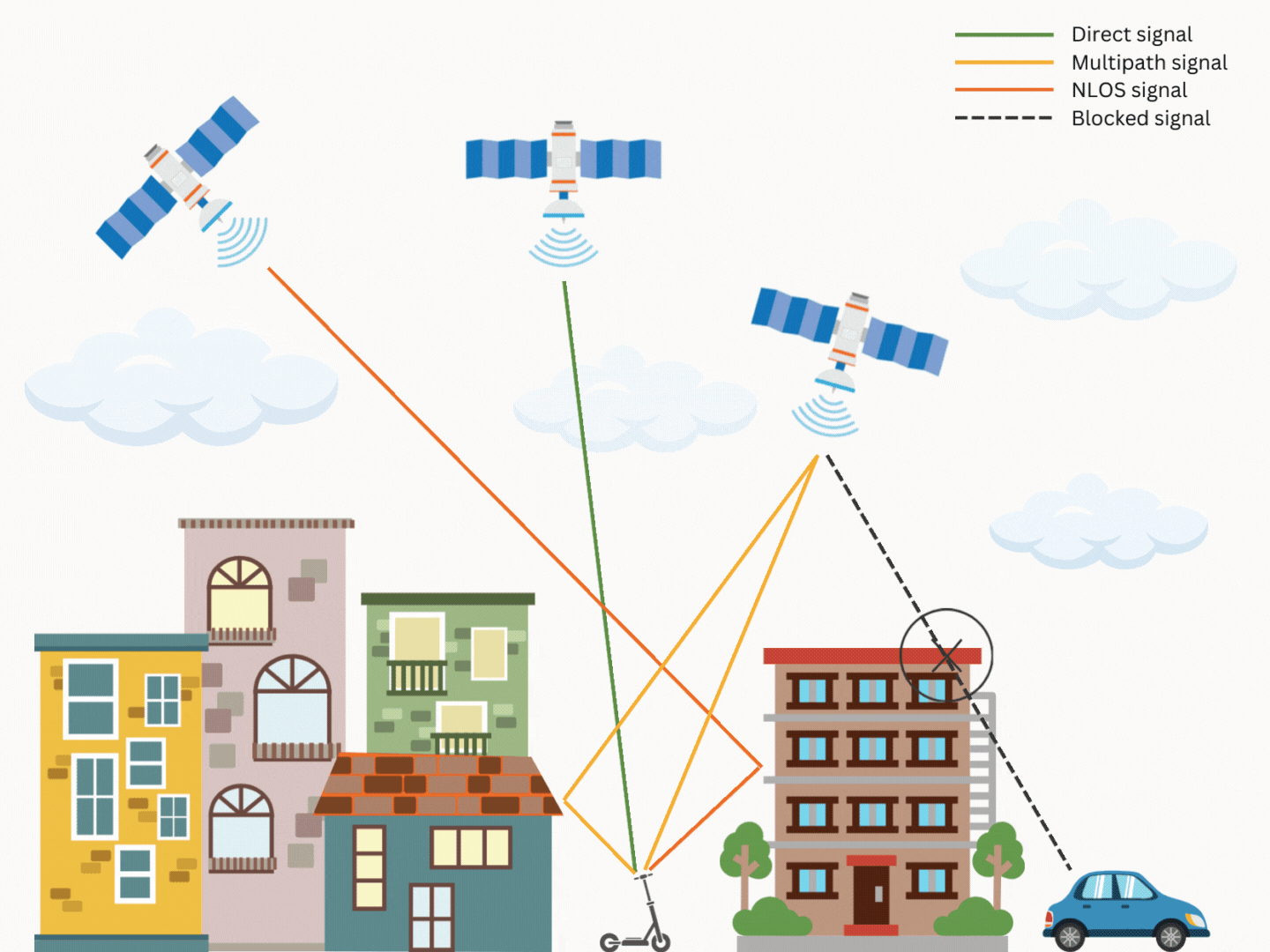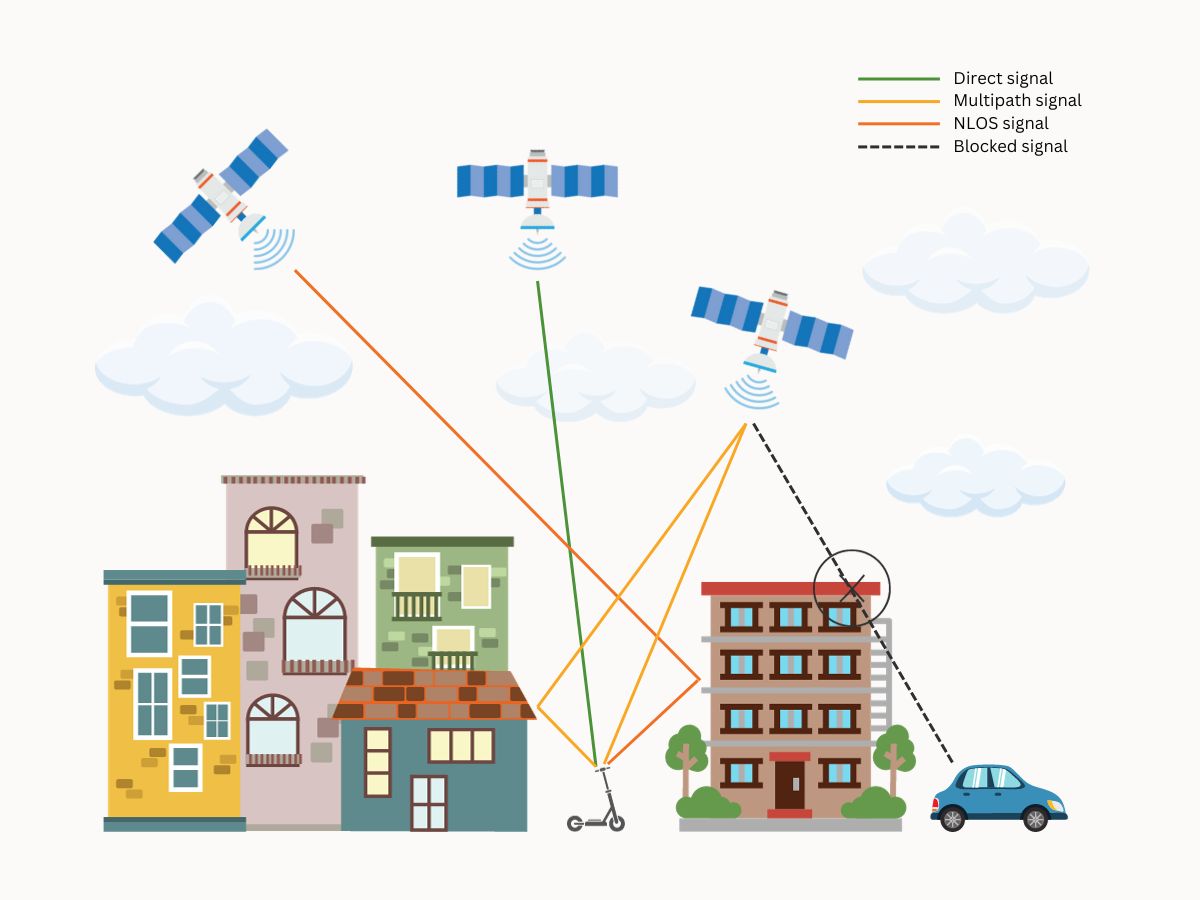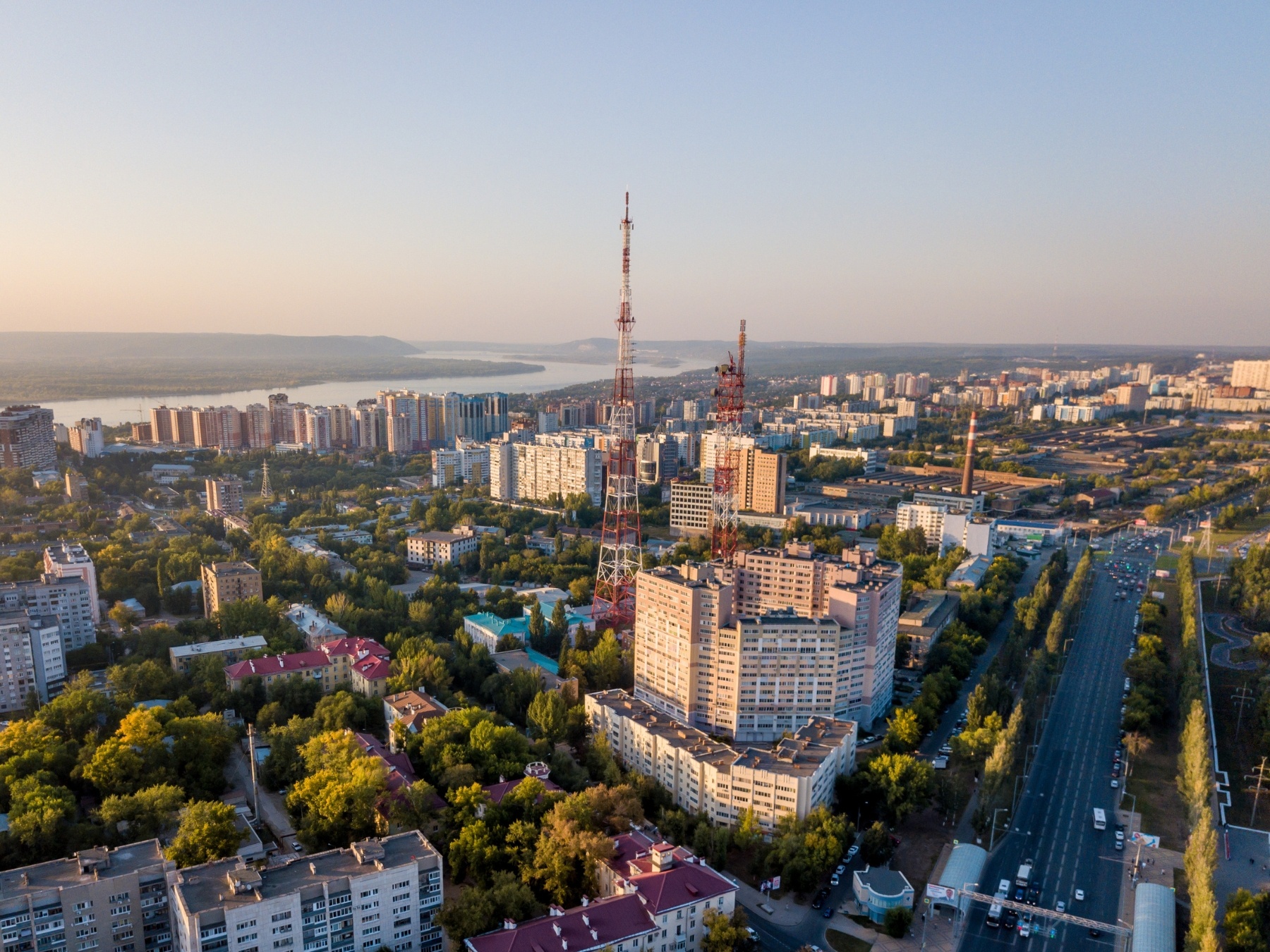Global Navigation Satellite Systems (GNSS) have revolutionized the way we navigate the world, providing accurate location information through a network of satellites. However, as technology advances and our reliance on precise location data grows, it becomes evident that GNSS alone may not be sufficient in all scenarios.
In this article, we explore the limitations of GNSS and delve into how leveraging postioning technologies based on mobile networks, particularly 5G SA (discover the differences between 5G and 5G SA), can help overcome these challenges and enhance location services.

Challenges with GNSS
While GNSS has proven invaluable in outdoor settings, its effectiveness is compromised in urban environments and indoor scenarios. Some of the key limitations include:
Signal reflections: Urban landscapes are rife with structures that cause signal reflections, leading to multipath and non-line-of-sight (NLOS) issues. This hinders the device's ability to receive a direct signal from satellites.
Signal error: GNSS signals are susceptible to errors originating from satellite hardware, atmospheric conditions, and user devices. In open environments, these errors can result in positioning inaccuracies of several meters.
Signal blockage: Obstacles such as buildings, walls, and metal structures can attenuate satellite signals, causing a loss of positioning information. In extreme cases, users may experience a complete lack of position data.
Limited visibility: GNSS requires a clear line of sight to satellites to receive direct signals. In urban environments or indoors, this is often compromised due to structures like buildings and walls.
The role of 5G Technology
Here's how 5G complements GNSS and addresses the challenges mentioned above:
Improved accuracy in urban environments: 5G's ability to penetrate obstacles and provide reliable connectivity in urban areas makes it a valuable ally in overcoming GNSS limitations. The combination of GNSS and 5G enables more accurate positioning even in the presence of signal reflections.
Low-latency for real-time tracking: One of the key strengths of 5G is its low-latency communication, making it ideal for applications that require real-time location data. In scenarios where GNSS signals may be unreliable, 5G steps in to ensure uninterrupted and precise positioning.
Indoor positioning: 5G's capabilities extend indoors, providing a seamless transition from outdoor to indoor positioning. This is particularly valuable in environments like shopping malls, airports, and large indoor venues, where GNSS signals may be weak or unavailable.
Signal resilience: 5G's robust connectivity mitigates signal blockage issues, ensuring a more reliable and consistent location experience for users. This is especially important in densely populated urban areas where signal interference is common.
While GNSS remains a fundamental technology for location-based services, its limitations in challenging environments necessitate the integration of complementary technologies.
Intersec's innovative approach
The synergy between GNSS and 5G represents a new era in location-based services, where users can seamlessly navigate and access precise location information across a wide range of scenarios. As we continue to push the boundaries of technological innovation, Intersec remains at the forefront, unlocking the full potential of location-based solutions through the integration of AGNSS and 5G technologies.
Intersec understands that a one-size-fits-all solution is not sufficient for the diverse and dynamic challenges of location-based services. By integrating 5G technology with existing GNSS capabilities, Intersec provides a comprehensive and resilient solution for both outdoor and indoor positioning.
As technology evolves, so does our approach to overcoming the limitations of existing systems. The marriage of GNSS and 5G represents a significant leap forward in the realm of location services. Intersec's commitment to innovation ensures that users can rely on accurate and timely location information, whether navigating city streets or exploring indoor spaces. The future of location-based services is here, and it's powered by the seamless integration of GNSS and 5G technologies.
 Unlocking location accuracy: beyond GNSS with 5G Technology" />
Unlocking location accuracy: beyond GNSS with 5G Technology" />


.jpg)









.webp)


.webp)




















